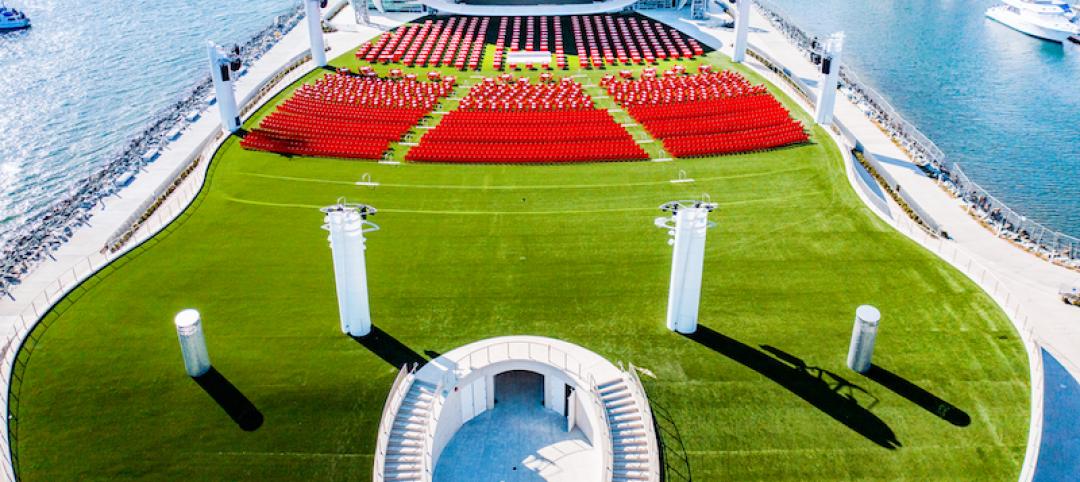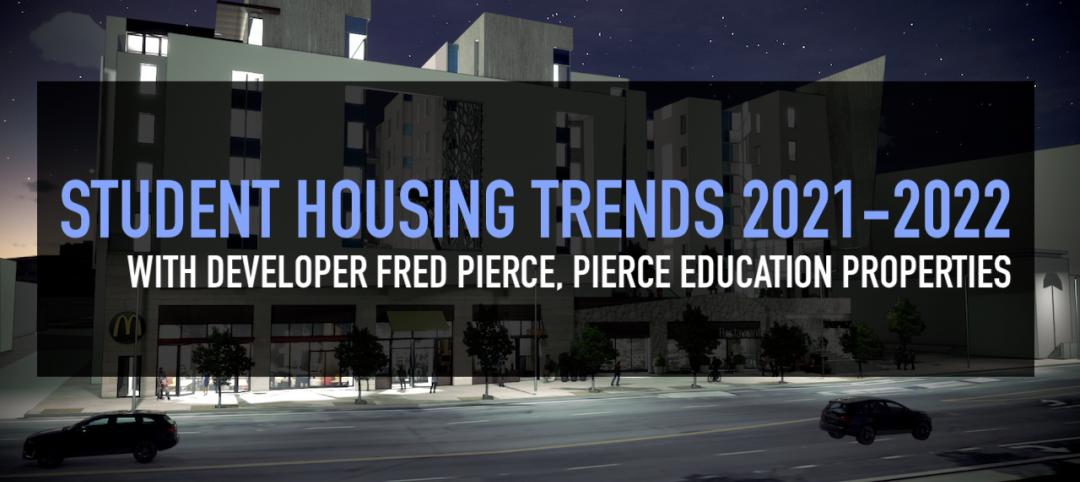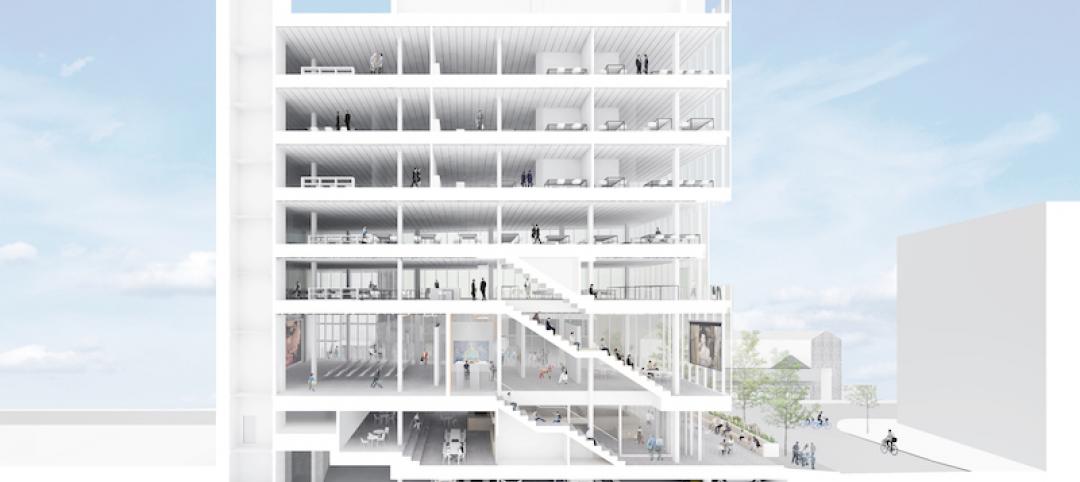Construction spending for education expanded modestly but steadily through March, while at the same time growth for other institutional construction had stalled earlier in 2009.
Education spending is now at or near the peak for this building cycle. The value of education starts is off 9% year-to-date compared to 2008. April starts fell 14% to the lowest total in more than three years. BD+C projects a 3–4% dip in education construction spending into early 2010, and then a recovery by the end of next year, which will bring spending up to early 2009 peak levels. Public education spending is up 6.4% in the past year but spending in the smaller, private sector dropped 0.4%. Funding for private education projects is very sensitive to current economic conditions, specifically tuition payments from current income and investment earnings.
College construction spending is up 12.2% from a year ago, but K-12 spending is up only 3%. Colleges boosted spending for instructional space 20.6% over the past year. Dormitory spending was up only 5%. These increases are the result of the relatively rapid expansion of community colleges and part-time programs for working adults. The small expansion of K-12 construction spending was entirely for high schools, which is up 7.9% over the last year. Middle school construction spending was steady, while elementary spending fell about 3%. These differences mirror enrollment changes. The peak enrollment is now in the 10th grade, which puts more pressure on high schools.
The reason the education construction recession is relatively modest is largely due to nearly $200 billion in state and local government aid included in the stimulus plan. This money is being paid out quickly because it's not linked to specific projects. These new funds offset the huge negative impact of reduced tax receipts in FY 09–10. Without the stimulus funds, a deep recession in public education construction would occur in 2009–10. Instead, most of the recession will be offset, with the balance deferred to 2011–12.
Related Stories
Giants 400 | Aug 30, 2021
2021 Giants 400 Report: Ranking the largest architecture, engineering, and construction firms in the U.S.
The 2021 Giants 400 Report includes more than 130 rankings across 25 building sectors and specialty categories.
Resiliency | Aug 19, 2021
White paper outlines cost-effective flood protection approaches for building owners
A new white paper from Walter P Moore offers an in-depth review of the flood protection process and proven approaches.
Cultural Facilities | Aug 2, 2021
A new venue for the San Diego Symphony’s outdoor performances opens this week
Rady Shell at Jacobs Park was funded almost entirely by private donors.
Cultural Facilities | Jun 28, 2021
Maine’s Children’s Museum & Theatre moves into new location that doubles its size
Interactive exhibits are among its features.
Resiliency | Jun 24, 2021
Oceanographer John Englander talks resiliency and buildings [new on HorizonTV]
New on HorizonTV, oceanographer John Englander discusses his latest book, which warns that, regardless of resilience efforts, sea levels will rise by meters in the coming decades. Adaptation, he says, is the key to future building design and construction.
Multifamily Housing | Jun 3, 2021
Student Housing Trends 2021-2022
In this exclusive video interview for HorizonTV, Fred Pierce, CEO of Pierce Education Properties, developer and manager of off-campus student residences, chats with Rob Cassidy, Editor, MULTIFAMILY Design + Construction about student housing during the pandemic and what to expect for on-campus and off-campus housing in Fall 2021 and into 2022.
Digital Twin | May 24, 2021
Digital twin’s value propositions for the built environment, explained
Ernst & Young’s white paper makes its cases for the technology’s myriad benefits.
Wood | May 14, 2021
What's next for mass timber design?
An architect who has worked on some of the nation's largest and most significant mass timber construction projects shares his thoughts on the latest design trends and innovations in mass timber.
Cultural Facilities | Apr 1, 2021
A Connecticut firm deploys design to assist underserved people and communities
Hartford, Conn.-based JCJ Architecture traces its roots to 1936, when the U.S. was just coming out of an economic depression and its unemployment rate was still 14%. In 2021, with the country trying to recover economically from the impact of the coronavirus, and with questions about social inequity entering the public debate as rarely before, JCJ has focused its design work on projects and clients that are committed to social responsibility and advocacy, particularly for underserved or marginalized communities.
Cultural Facilities | Mar 1, 2021
Moise Safra Center completes in New York City
The project will act as a second home for the Jewish community it serves.






![Oceanographer John Englander talks resiliency and buildings [new on HorizonTV] Oceanographer John Englander talks resiliency and buildings [new on HorizonTV]](/sites/default/files/styles/list_big/public/Oceanographer%20John%20Englander%20Talks%20Resiliency%20and%20Buildings%20YT%20new_0.jpg?itok=enJ1TWJ8)









